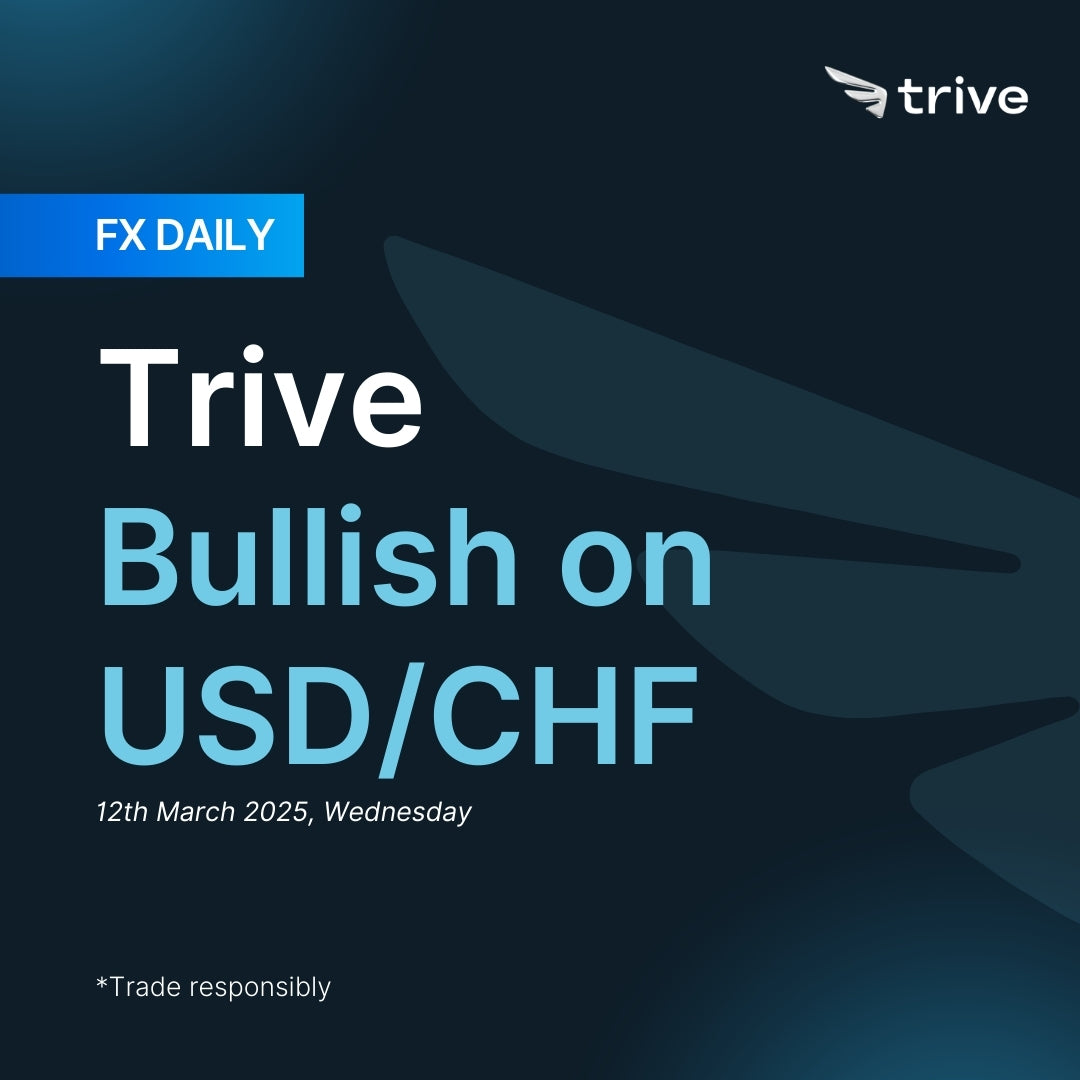FX Daily: Trive Bullish on USD/CHF

Now is too early to conclude that the USD has turned bearish despite recent growth concerns. The Fed is expected to maintain its current rate, and tariffs remain in place. On the other hand, barring any escalation in geopolitical or trade developments, the CHF is likely to become the preferred funding currency given the SNB's dovish stance.
USD: Too early to say bearish
Over the past week, the USD faced pressure primarily due to a shift in market focus away from Trump’s tariff rhetoric, with growing concerns about a potential slowdown in the US economy. Recent data releases, including retail sales, consumer confidence, and the ISM Manufacturing PMI, showed notable declines. This has led markets to continue pricing in approximately three rate cuts for the remainder of the year. Meanwhile, Trump delayed tariffs on imports from Canada and Mexico — at least those covered by the USMCA trade deal — pushing the implementation to April 2nd, the same day as Trump's planned reciprocal tariff measures. This back-and-forth on tariffs added further pressure on the USD. However, despite the delay, it would be premature to dismiss the impact of Trump's tariff actions on the dollar. Aggressive trade measures are still expected, not only on April 2nd but also on March 12th, which marks the deadline for US tariffs on aluminum and steel. Therefore, it remains too early to turn bearish on the USD solely due to the current growth concerns and tariff postponements.
Beyond trade policy, the February NFP report showed job gains of 151K, below the expected 160K, with the previous figure revised down to 125K from 143K. The unemployment rate edged up to 4.1% from 4.0%, contrary to expectations for it to remain unchanged, but still below the Fed's year-end forecast of 4.3%. While the report wasn’t as weak as some feared, there is significant uncertainty ahead, particularly with the government’s job cut efforts under the DOGE. Overall, this data is unlikely to shift the Fed’s stance significantly, as their primary focus remains on future economic growth risks. Money markets are currently pricing in around 70bps of rate cuts this year, with the next cut fully priced by June. The Fed is widely expected to keep rates unchanged in March, while May’s decision appears evenly split at around 50/50. Following the NFP report, Powell reiterated his recent messaging, emphasizing that the Fed is not in a hurry to adjust policy despite uncertainties, while noting that the economy remains in a solid position. This reaffirms that there is no immediate need for additional rate cuts, which could temper the market’s current expectations of three cuts this year and provide some relief to the USD.
Looking ahead, the US economic calendar is packed, featuring CPI, PPI, the University of Michigan Preliminary Consumer Sentiment Index, JOLTS, and the March 12th tariff deadline on aluminum and steel. The CPI report is expected to show another strong 0.3% m/m increase — with markets needing an average of 0.17% m/m to sustain 2% y/y inflation — keeping the Fed cautious and making the March FOMC meeting likely a non-event. Overall, the baseline outlook for the USD remains bullish. However, with ongoing growth concerns to drag the USD recently, another set of strong domestic data and clear trade policy developments will be necessary to drive the next leg higher for the USD.
CHF: Funding currency
Over the past week, the CHF has strengthened, primarily driven by external factors such as renewed U.S. tariff threats under President Trump, ongoing concern about the US growth, and of geopolitical reinforcing its safe-haven appeal. However, this short-term resilience masks a broader bearish outlook for the currency, shaped by Switzerland’s subdued inflation, mounting expectations of Swiss National Bank (SNB) rate cuts as early as March or June, and the CHF’s structural shift back into a preferred funding currency due to its low yields. The SNB has maintained a dovish stance, subtly adjusting its forward guidance in December 2024 to signal a more cautious, data-dependent approach to monetary easing, though markets continue to price in rate reductions for 2025. While there is some speculation about a return to negative interest rates, the SNB appears more inclined to rely on foreign exchange interventions to curb excessive currency strength in the near term.
Meanwhile, the latest Swiss February CPI data came in at 0.3% y/y and 0.6% m/m. Although the release slightly exceeded expectations, it aligned with the SNB's Q1 projection of 0.3%. When combined with January’s 0.4%, the Q1 rate is running marginally hotter than expected, but not significantly so. The data triggered a modest shift in market pricing for a March rate cut, with around 22bps of easing now implied — slightly less than the fully priced 25bps cut at the end of last week. Capital Economics still expects the SNB to cut by 25bps this month but acknowledges the CPI data has raised the odds of a hold.
Looking ahead, with no significant domestic data on the CHF calendar, the currency will remain largely driven by global risk sentiment, particularly U.S. tariff developments, which could reinforce its safe-haven demand in the near term. Nonetheless, barring any major geopolitical shocks or domestic surprises, the CHF is expected to persist as a favored funding currency throughout 2025. Its low yields, coupled with the SNB’s dovish policy bias, suggest a prolonged bearish trajectory over the longer term.
 USD/CHF 4H Chart
USD/CHF 4H Chart
Disclaimer
This material is provided for informational purposes only and does not constitute financial, investment, or other advice. The opinions expressed in this material are those of the author and do not necessarily reflect the views of Trive International. No opinion contained in this material constitutes a recommendation by Trive International or its author regarding any particular investment, transaction, or investment strategy. This material should not be relied upon in making any investment decision.
The information provided does not consider the individual investment objectives, financial situation, or needs of any specific investor. Investors should seek independent financial advice tailored to their individual circumstances before making any investment decisions. Trive International shall not be liable for any loss, damage, or injury arising directly or indirectly from the use of this information or from any action or decision taken as a result of using this material.
Trive International may or may not have a financial interest in the companies or securities mentioned. The value of investments may fluctuate, and investors may not get back the amount they originally invested. Past performance is not indicative of future results.
For more information about Trive International, please visit http://trive.com/int
Additional Information
Investing involves risk, including the potential loss of principal. Diversification and asset allocation strategies do not ensure a profit or guarantee against loss. The content in this material is subject to change without notice and may become outdated or inaccurate over time. Trive International does not undertake any obligation to update the information in this material.
By accessing this material, you acknowledge and agree to the terms of this disclaimer. If you do not agree with these terms, please refrain from using this information.
暂无评论
主页
特里夫
TriveHub





0条评论